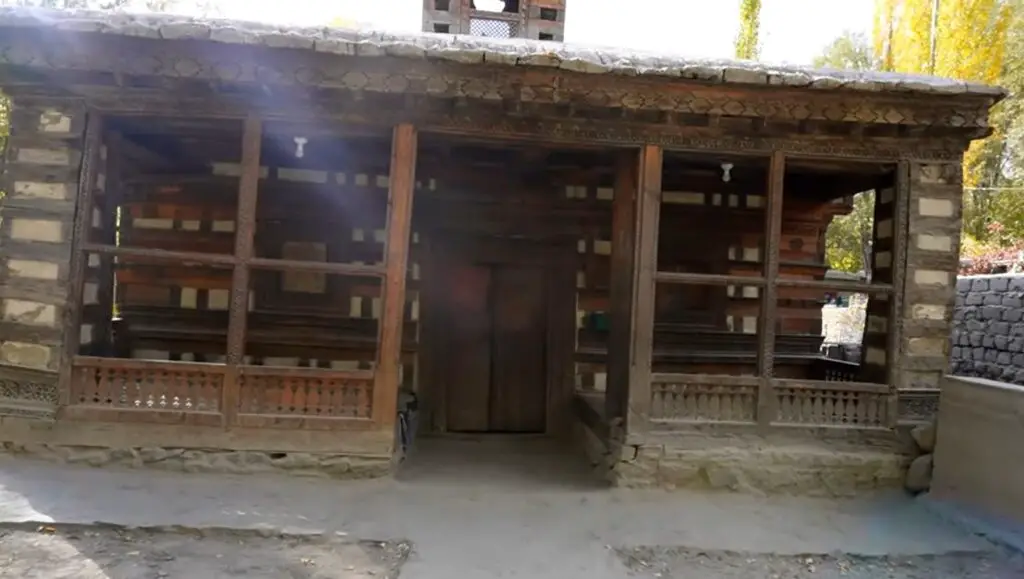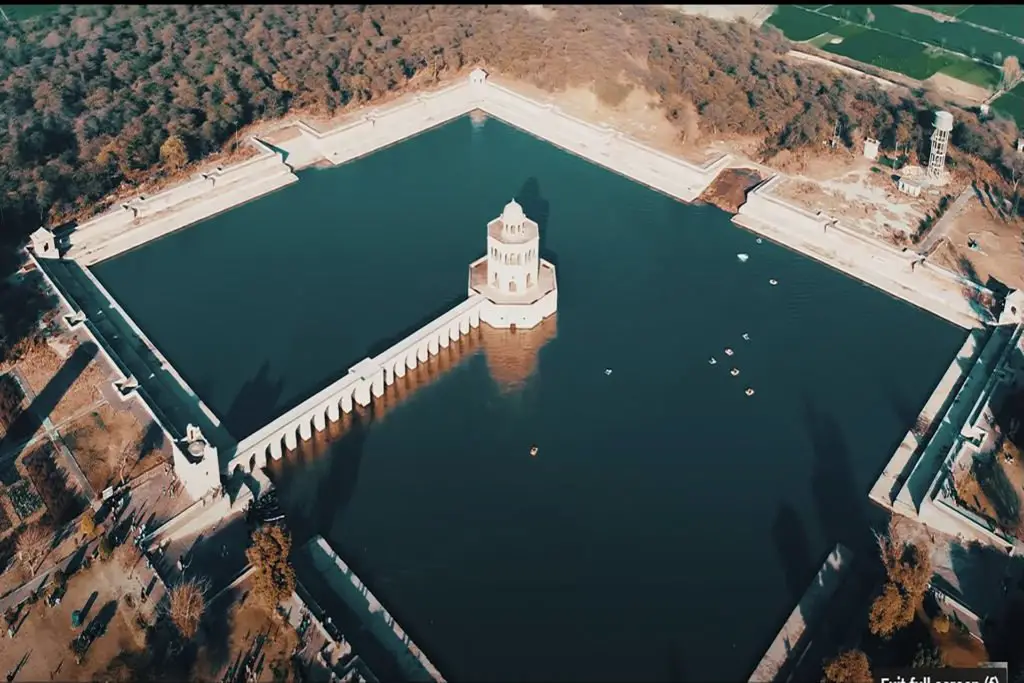Amburiq Mosque or Amburiq Masjid is a mosque located in Shigar Valley of Pakistan. It is one of the oldest mosques in Baltistan. The mosque was built by Sayed Ali Hamdani and is among the famous monuments in Baltistan.
The Amburiq Mosque, also known as the Amborik Mosque, dates back to the early 17th century and is considered one of the oldest and most significant examples of wooden architecture in the region.
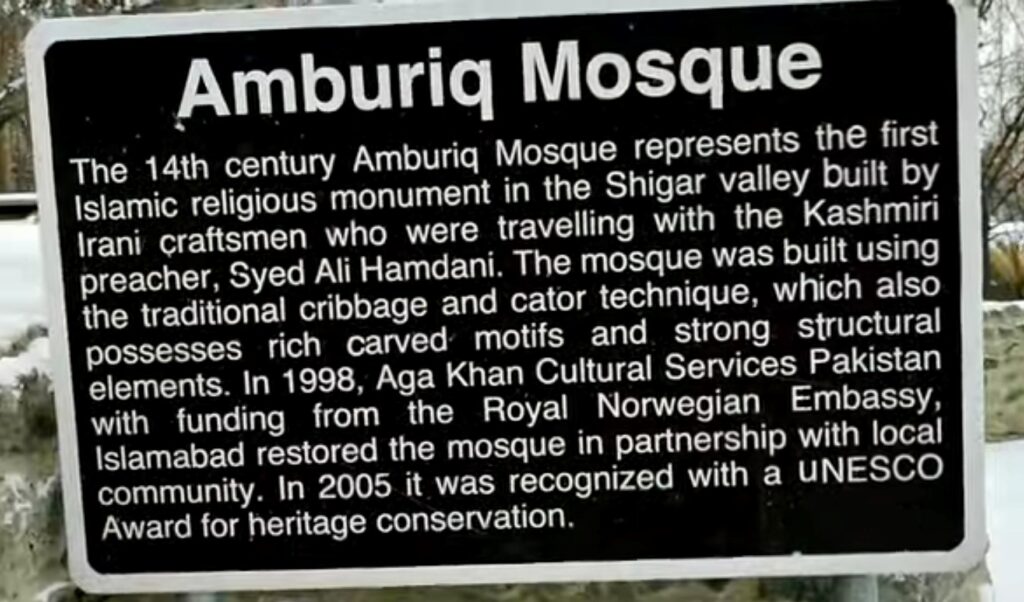
Amburiq Mosque Location
Amburiq mosque is located in a picturesque valley of Shigar Valley in Gilgit Baltistan, surrounded by towering mountains and verdant forests. The mosque’s wooden structure is supported by several large wooden columns, which are intricately carved with floral and geometric patterns. The roof of the mosque is also made of wood and is adorned with intricate carvings and paintings.
The mosque is named after the Amburiq village, where it was originally built. It was constructed during the reign of Ali Sher Khan Anchan, the ruler of the Baltistan region in the early 17th century. The mosque is made entirely of wood and is built in the traditional Balti style of architecture.
The mosque’s prayer hall is divided into two sections, with the front section reserved for the use of men, and the back section reserved for women. The walls of the mosque are decorated with colorful frescoes, which depict scenes from Islamic history and tradition. The frescoes are believed to have been painted by local artists, using traditional techniques and natural pigments.
Museum in Amburiq Mosque, Shigar
A small museum has been established inside the mosque to help create awareness of the historical significance of the site and instill a conservative attitude towards socially significant buildings in the local community.
In 2005, UNESCO awarded the mosque an Asia Pacific Heritage Award.
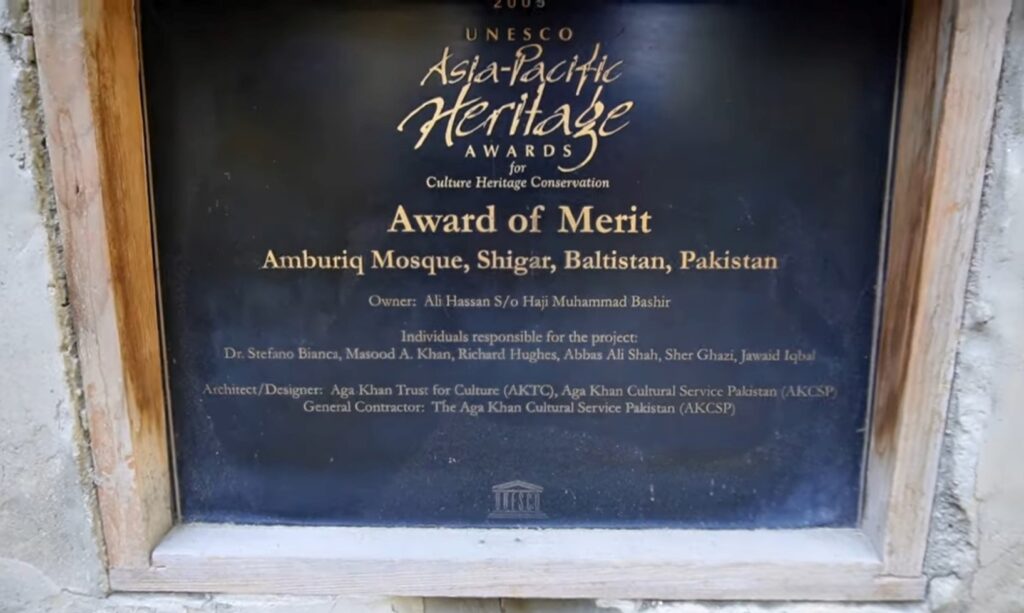
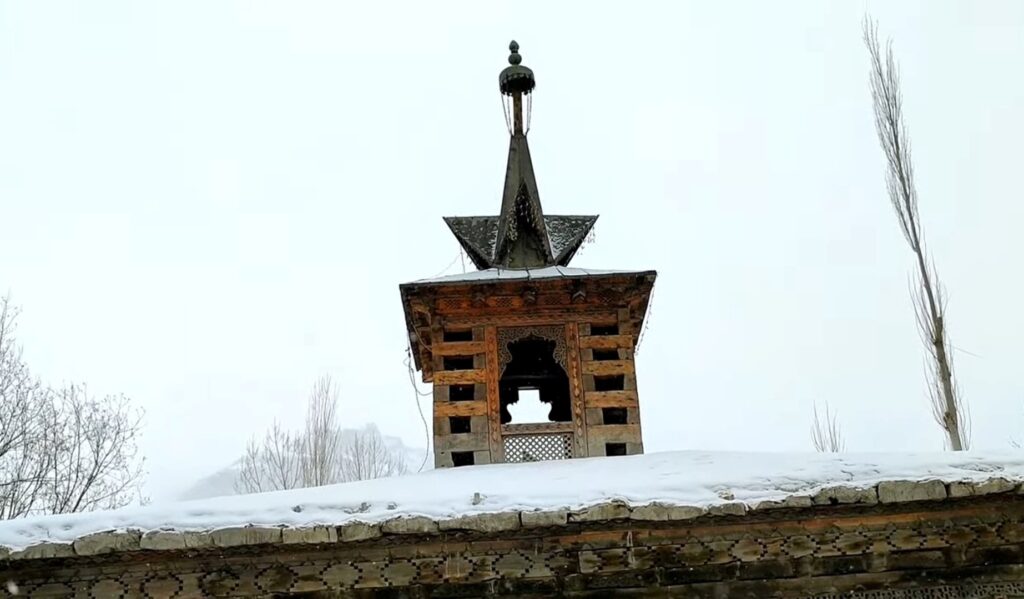
Amburiq Mosque Histrory
It is one of the oldest mosques in Baltistan. It is believed to be about 750 years old and was built by Persian builders who accompanied the famous Sufi saint Shah Ali Hamadan when he frequented the area in the 14th century. The mosque is made of wood and stone using the traditional “cribbage and cator” technique.
The Amburiq Mosque is an important cultural and historical landmark in the Gilgit-Baltistan region. It has survived for centuries, despite being situated in an earthquake-prone area, and has been the site of many religious and cultural events over the years. The mosque is also a popular tourist attraction, drawing visitors from all over the world who come to admire its unique architecture and rich history.
In recent years, there has been a growing interest in the preservation and restoration of the Amburiq Mosque, both as a cultural heritage site and as a tourist destination. Efforts are underway to ensure that the mosque is properly maintained and preserved for future generations, so that they may continue to appreciate its beauty and significance.
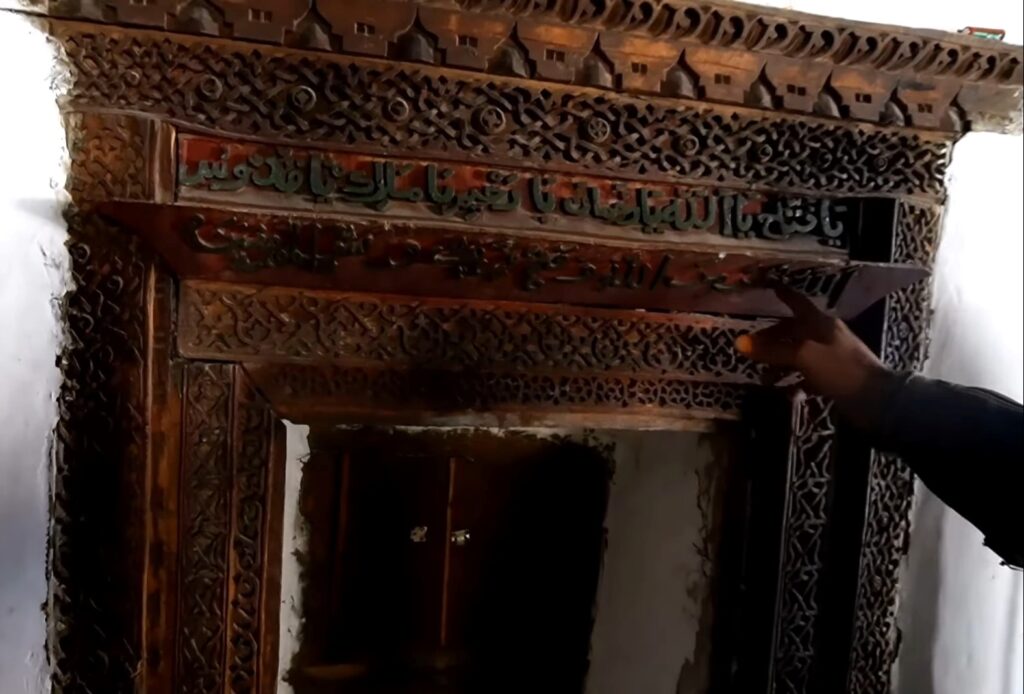
At first glance, the Amburiq Mosque in Shigar bears little resemblance to a traditional mosque. Designed by a Kashmiri architect, the 14th-century mud and wood structure deviates from conventional architectural patterns with its conspicuously tall insignia. However, a closer inspection reveals its mosque-like features that have been shaped by years of history and events that took place in the Shigar Valley, 35 km east of Skardu in Baltistan.
Built by Amir Kabir Syed Ali Hamdani, a legendary saint who helped spread Islam in the region, the mosque was the first of its kind to be installed in Shigar. On his journey from Yarkand in the 14th century (between 1372 and 1383), Syed Ali Hamdani passed through the famous Braldu La pass to Shigar with his missionaries.
In his effort to strengthen Islam in the region, he commissioned his craftsmen to build a mosque. The structure was built with the help of residents who used techniques that were a combination of Kashmiri, Tibetan, and Persian architectural patterns, symbols, and motifs.
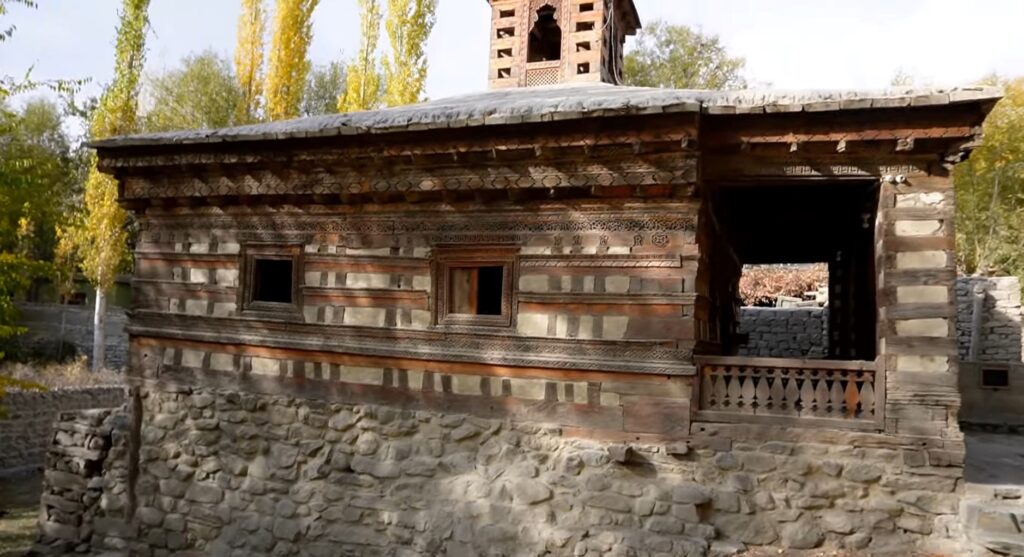
The mosque therefore shows traces of the then-prominent Buddhist culture of Baltistan leaving its imprint on the nascent Islamic way of life. It is a mixture of cultures with a typical Kashmiri-pitched roof and a Tibetan tower on top. The structure resembles a wooden shell based on cribs and beams, the exterior is full of floral and bird carvings. Inside is a prayer hall with a verandah to the east that serves as an entrance hall.
After years of neglect that took a visible toll on the building, especially after an earthquake witnessed 90 years ago that caused it to tilt to the west, the mosque was finally restored in 1998. The United Nations Educational, Scientific and Cultural Organization (UNESCO) Asia-Pacific Heritage Award-winning project was carried out by the Aga Khan Cultural Service Pakistan (AKCSP) along with the local community, who provided labor and knowledge of mud construction techniques to restore the mosque to its original form.
The year-long project strictly adhered to international conservation standards and raised residents’ awareness of how to manage the mosque’s regular maintenance on their own.
Every year, hundreds of devotees and visitors make a pilgrimage to the Amburiq Mosque, the only historical religious building still in use in the northern regions of Pakistan, as such traces of Buddhism in Baltistan are a rare historical treasure. While years of looting and vandalism have destroyed much of the region’s heritage, the Amburiq Mosque still stands tall in all its glory – a nostalgic reminder of far more tolerant times.
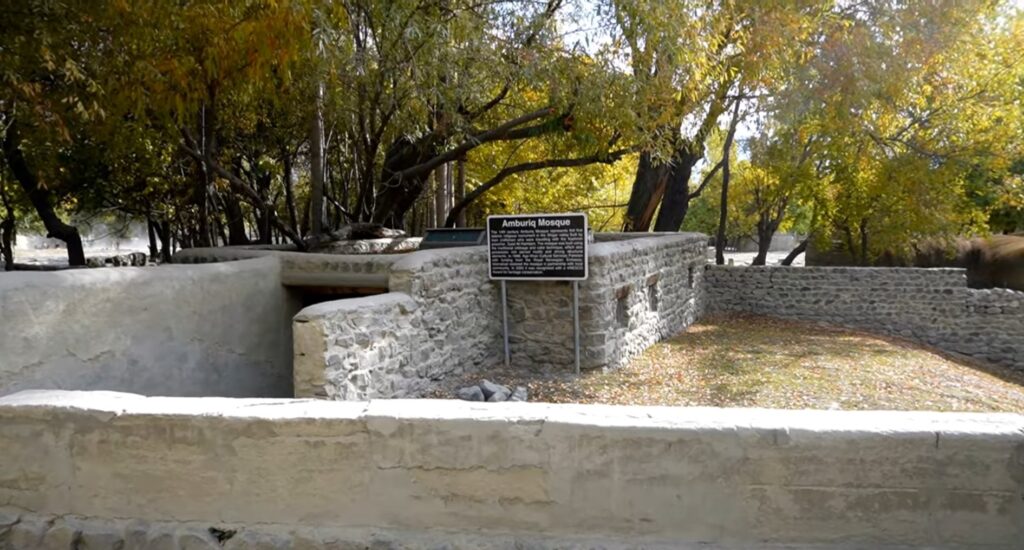
In conclusion, the Amburiq Mosque is a remarkable example of the rich cultural and architectural heritage of the Gilgit-Baltistan region. Its unique wooden structure, intricate carvings, and colorful frescoes make it a true masterpiece of Islamic art and architecture. As a cultural and historical landmark, it is an important symbol of the region’s rich and diverse history and traditions and a testament to the resilience of its people.

